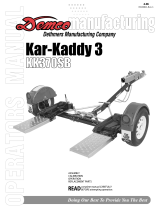
4RUNNER (ᝌᛆ͕)
13
OPERATING FROM OUTSIDE
After turning and holding the key for a few
seconds. the back window will move as
far as holding the key.
To open: Turn the key counterclockwise.
To close: Turn the key clockwise.
You can also open the back window when
the back window wiper is working. At the
time, the wiper stops working until the
window is closed again.
CAUTION
To avoid serious personal injury, you
must do the following.
D Always make sure the head, hands
and other parts of the body of all
occupants are kept completely in-
side the vehicle before you close
the power back window. If some-
one’s neck, head or hands gets
caught in a closing window, it
could result in a serious injury.
When anyone closes the power
back window, be sure that they op-
erate the window safely.
D When small children are in the ve-
hicle, never let them use the power
back window switch without super-
vision. Use the window lock button
to prevent them from making unex-
pected use of the switch.
D Never leave small children alone in
the vehicle, especially with the igni-
tion key still inserted. They could
use the power back window switch
and get trapped in a window. Unat-
tended children can become in-
volved in serious accidents.
D Keep the back window closed while
driving. This not only keeps the
luggage from being thrown out but
also prevents exhaust gases from
entering the vehicle.
Back door
LOCKING AND UNLOCKING WITH KEY
Insert the key into the keyhole and turn
it.
To lock: Turn the key clockwise.
To unlock: Turn the key counterclockwise.
The back door will be controlled by oper-
ating the power door lock switch.
When closing the back door, make sure
it is fully closed.
See "Luggage stowage precautions" in
Partȡ2 for precautions to observe in load-
ing luggage.





















